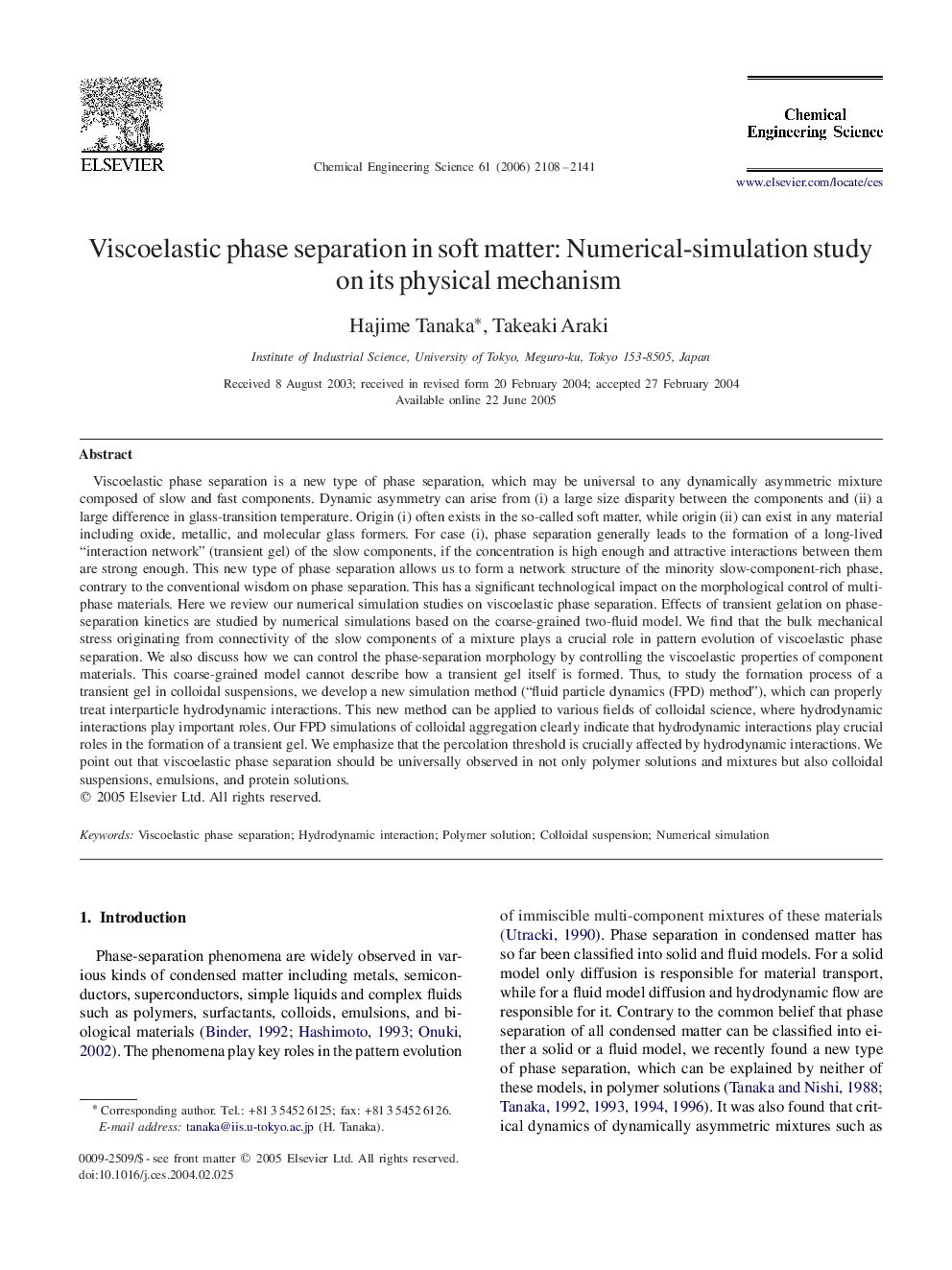| کد مقاله | کد نشریه | سال انتشار | مقاله انگلیسی | نسخه تمام متن |
|---|---|---|---|---|
| 159114 | 457027 | 2006 | 34 صفحه PDF | دانلود رایگان |

Viscoelastic phase separation is a new type of phase separation, which may be universal to any dynamically asymmetric mixture composed of slow and fast components. Dynamic asymmetry can arise from (i) a large size disparity between the components and (ii) a large difference in glass-transition temperature. Origin (i) often exists in the so-called soft matter, while origin (ii) can exist in any material including oxide, metallic, and molecular glass formers. For case (i), phase separation generally leads to the formation of a long-lived “interaction network” (transient gel) of the slow components, if the concentration is high enough and attractive interactions between them are strong enough. This new type of phase separation allows us to form a network structure of the minority slow-component-rich phase, contrary to the conventional wisdom on phase separation. This has a significant technological impact on the morphological control of multi-phase materials. Here we review our numerical simulation studies on viscoelastic phase separation. Effects of transient gelation on phase-separation kinetics are studied by numerical simulations based on the coarse-grained two-fluid model. We find that the bulk mechanical stress originating from connectivity of the slow components of a mixture plays a crucial role in pattern evolution of viscoelastic phase separation. We also discuss how we can control the phase-separation morphology by controlling the viscoelastic properties of component materials. This coarse-grained model cannot describe how a transient gel itself is formed. Thus, to study the formation process of a transient gel in colloidal suspensions, we develop a new simulation method (“fluid particle dynamics (FPD) method”), which can properly treat interparticle hydrodynamic interactions. This new method can be applied to various fields of colloidal science, where hydrodynamic interactions play important roles. Our FPD simulations of colloidal aggregation clearly indicate that hydrodynamic interactions play crucial roles in the formation of a transient gel. We emphasize that the percolation threshold is crucially affected by hydrodynamic interactions. We point out that viscoelastic phase separation should be universally observed in not only polymer solutions and mixtures but also colloidal suspensions, emulsions, and protein solutions.
Journal: Chemical Engineering Science - Volume 61, Issue 7, April 2006, Pages 2108–2141